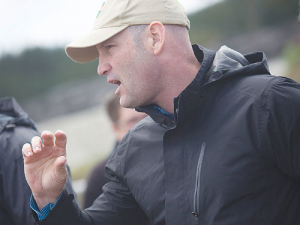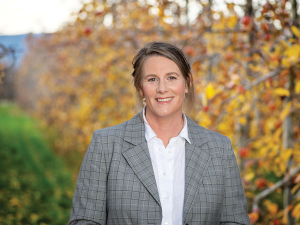Milk production numbers show this is tough on the industry, farmers’ back pockets and on the cows. The issues are obvious, but the standout is lameness, which may be a little more complicated on farms than first appears.
The key problem is that in constantly wet conditions the hoof undergoes softening of the hoof wall and interdigital space. This softening may result in tenderness, breakages, bruising, uneven wear and infections.
Often this can be exacerbated by the diet and feeding conditions. Feeding conditions such as available bunk space, level of appetite and time on the feed pad can all affect the incidence of lameness.
Recently I discussed with a farmer the changes he had seen in cows on a new concrete feed pad. Due to the wet weather his cows were spending more time on the feed pad and often fighting for space and available feed.
This has caused wear at the back of the hoof, exacerbating lameness and hoof structure.
Diet can also be an appreciable cause of lameness: diets conducive to low rumen pH, even for short periods, can cause soft and tender feet and often result in laminitis, elongated hoof and white line disease.
Controlling rumen pH in New Zealand’s pastoral conditions is not as simple as one might think. While dietary starch level is generally considered to be the major driver of low rumen pH and acidosis, the absence of starch in our pastures does not mean they are low risk for acidosis.
Pasture has two aspects that can cause sub-clinical acidosis and low rumen pH -- high sugar and low effective fiber. High sugar means that lactic acid-producing bacteria are present, active and already producing a lot of acid. A lack of effective fiber means fast passage rates, low levels of salivation (the natural rumen buffer) and poor rumen activity.
On the other hand, diet can be an effective tool for combating lameness. Diets correctly formulated and fed can result in optimum rumen health and contented cows, lessening the burden on feet. Furthermore, diets can be an effective tool for delivering nutrients known to aid foot health.
Many scientific publications refer to the effectiveness of dietary supplements containing zinc for improving hoof hardness and growth rates. Both organic and high quality sources of zinc oxide and zinc sulphate are effective for this purpose. It is often suggested that zinc is effective due to its ability to improve cell wall integrity and as a result hoof hardness; it is generally effective within a matter of weeks.
Another dietary addition is the vitamin biotin. The mode of action of biotin is a little different from that of zinc. Biotin is thought to be active in the intracellular space – between cells (think mortar between bricks). Typically biotin is active in the coronary band, and as a result it usually requires two-three months for the use of biotin to be noticed in a herd, and it takes this long to notice the absence.
One interesting aspect of lameness is timing: while continual wet conditions are an obvious cause of lameness, issues such as white line are a little harder to understand.
In the South Island, severe lameness in herds -- often up to one third – is often reported in late summer and autumn. The typical comment from farmers is that as soon as autumn rain falls, the cows go lame. But how would one decent rain event cause mass lameness in herds?
The answer is usually white line disease. Interestingly, with this, the initial damage often has occurred two-three months before. So when a dairy farmer says “autumn lameness starts as soon as we get rain, sometimes in January”, we have to ask what happened two-three months before this; the answer will be grain and rapidly growing spring grass during August to October. Grain is often used in the South Island to fill the feed gap on the front shoulder. But who knew it to be a cause of late-season lameness?
As mentioned earlier, fast growing grass is full of sugar and low on fibre. When grain is added to this diet the chances of sub-clinical acidosis is vastly increased, often because we add this grain in a ‘slug’ fed twice a day. The change in rumen bacteria and their activity increases the production of histadine which is a major cause of altered blood flow in the hoof and thereafter lameness.
White line disease refers to separation and haemorrhaging of the white line area of the hoof. It will often be of no real concern if conditions are dry, but as soon as there is wet weather, mud and grit are forced into the white line causing severe lameness. In really bad situations I have even seen foreign material at the coronary band after travelling all the way up the hoof.
One of the unknown issues in lameness is metabolics. Sub-clinical milk fever and magnesium deficiency result in poor muscle strength, resulting in reduced strength and agility. This in turn can often lead to hoof abrasions and bruising.
So though there is not much we can do about wet weather, we can add supplements to diets to improve hoof conditions to reduce lameness, along with targeted trimming and correction and -- most important -- good clean races and steady moving of cows.
• Joe McGrath is a nutritionist with Sollus Nutrition.









